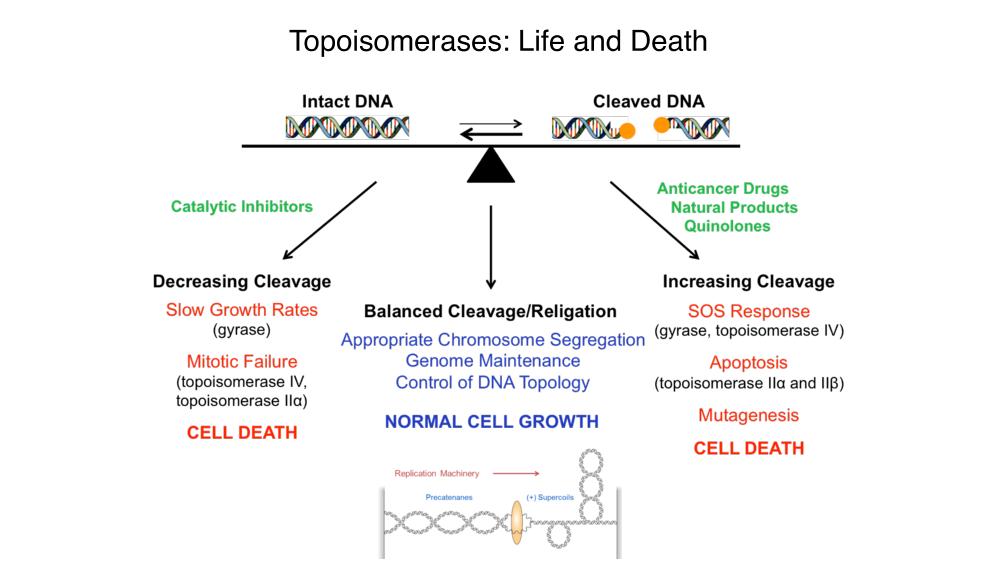Neil Osheroff
Department of Biochemistry
Department of Pharmacology
Chemical and Physical Biology Program (CPB)
The intertwining of the two strands of the DNA helix presents a number of topological problems that the cell must be able to overcome in order to maintain its genetic information. Consequently, the enzymes that modulate the topological state of nucleic acids, the DNA topoisomerases, play a crucial role in controlling the physiological functions of DNA. The type II enzyme alters nucleic acid topology by passing an intact double helix of DNA through a transient double-stranded break made in a second DNA helix. Because these enzymes cleave DNA, they also have the potential to fragment the genome. As a result, they are targets for some of the most widely prescribed anticancer and antibacterial drugs. We are very interested in how type II topoisomerases function and how they interact with drugs.

The intertwining of the two strands of the DNA helix presents a number of topological problems that the cell must be able to overcome in order to maintain its genetic information. Consequently, the enzymes that modulate the topological state of nucleic acids, the DNA topoisomerases, play a crucial role in controlling the physiological functions of DNA. The type II enzyme alters nucleic acid topology by passing an intact double helix of DNA through a transient double-stranded break made in a second DNA helix. Because these enzymes cleave DNA, they also have the potential to fragment the genome. As a result, they are targets for some of the most widely prescribed anticancer and antibacterial drugs. We are very interested in how type II topoisomerases function and how they interact with drugs.
Keywords: DNA topology , DNA topoisomerases , DNA cleavage , anticancer drugs , antibacterial drugs
Research Area: Drug Design , Cell Cycle, DNA Repair, and Chromosome Biology